 Note: This post was originally published on September 9th, 2020 but most of it should still be relevant, even if some of my maths and Fall Guys references are not. I also enjoy the original Sonic Adventure
way more now
than I did back when I wrote this, and I was admittedly a bit harsh on the Midway games. Anyway, thanks for reading!
Note: This post was originally published on September 9th, 2020 but most of it should still be relevant, even if some of my maths and Fall Guys references are not. I also enjoy the original Sonic Adventure
way more now
than I did back when I wrote this, and I was admittedly a bit harsh on the Midway games. Anyway, thanks for reading!
---------------------------------------------------
Well, shit. It’s been 21 years since the Dreamcast’s North American launch. That makes it old enough to drink here.
Legally.
Of course, that’s hardly news for all you folks outside of the States. In Japan, the Dreamcast has been of legal libation consumption age for nearly two years, both because it came out almost a year earlier and because the nation’s legal drinking age is 20. Doubly so for most European countries. In Germany, kids as young as 14 can drink wine and beer with their parents’ consent, which means the Dreamcast has been allowed to partake in the devil’s sauce for over seven years (with permission from the Saturn and Mega Drive, of course). And apparently you Brits have been legally allowed to drink at home since you were five (?!) years old. If true, the Dreamcast has been pounding pints in the UK since the Nintendo DS was in nappies.
Anyway, I write all of this because I find it both a convenient and unnecessarily convoluted excuse to crack open some brewskies and reminisce about the Dreamcast’s iconic launch library all those years ago. In the spirit of the occasion, I’d like to think of this feature as a Dreamcast 21 run of sorts.
I’ve always been fascinated with video game console launches and the “next gen” titles that usher us into each new era of gaming. I believe these launches provide unique insights into how platform holders aspire to position their consoles and contribute to the broader evolution of the medium. Console launches give us a glimpse into the creative mindsets of developers seeking to innovate with the new technological possibilities afforded to them. Then there’s the sheer spectacle of it all, which can also be fun in itself.
When it comes to the all-time great console launches, I can’t think of a better time than the sixth generation. Leading the way, of course, was the Sega Dreamcast. You probably don’t need me to sell you on the brilliance of its launch collection. At least in North America and PAL territories (sorry, Japan), there was almost a magic surrounding it. From day one, the Dreamcast hosted a legendary library of excellent games, many of which remain widely revered by the Junkyard community. I’ve recently replayed all 19 of the North American launch titles and I’m surprised which ones have held up at least as well as, if not better than I expected. Others, less so. More than anything, revisiting the Dreamcast’s launch library has helped strengthen my appreciation for the creative risks Sega took with its final console debut, as well as the more enduring impacts its games ultimately had on the medium.
It boggles my mind to consider the rare confluence of factors that could've enabled the Dreamcast to spoil early adopters with such a wealth of launch day riches. Back then, and for a variety of reasons, console launch lineups seemed more crucial for setting the tone and tenor of the experiences we might associate with those platforms. Perhaps the relative technical strides between generations underscored the need to show off a diverse stable of games that could never have existed previously. And before development costs skyrocketed in the HD era, maybe it was easier for more devs to begin and finish their projects in the time between receiving dev kits and preparing for launch. At the very least, developers might've been freer to work in peace without us asshat fans yammering at them on social media all the time.
So now, after 21 years, I figured I’d share my thoughts on all 19 North American Dreamcast launch titles through a not-completely-sober, retrospective lens. Here are my totally biased and nostalgia-be-damned takes on the Dreamcast’s original launch lineup. And in no particular ord—actually, screw it. I’m not usually a fan of ranked game lists but I’m a couple of beers in at this point and I’m fine with being a hypocrite.
OK. Worst to first. Let’s go...
19. Mortal Kombat Gold

Look, I know Mortal Kombat is a legendary fighting franchise and Scorpion and Sub Zero are national treasures but just hear me out: this game blows. Moving on.
18. TNN Motorsports Hardcore Heat

This off-road racing game was called Buggy Heat in Europe and Japan, which is a rad ass title. Then in a baffling show of marketing genericism, publisher ASC Games renamed it TNN Motorsports: Hardcore Heat for the North American release. I can only assume that must technically count as some sort of war crime. Also, did you know that TNN stood for The Nashville Network? I had to look that up.
As a fan of quirky racing games, I don’t really mind Heat’s lumbering off-road physics, dearth of courses, and obnoxious sound design that consists almost entirely of screeching tire noises and/or a dump truck's worth of shuffling gravel at all times. Honestly, few games have ever been ruined solely by their gameplay flaws or technical shortcomings. But games like Hardcore Heat are frequently ruined when they fail to attempt to do anything unique or interesting, and otherwise remain uninspired and charmless experiences. And that is this game’s greatest sin. Sure, it’s decently playable but when the Dreamcast launch featured so many more worthwhile and cleverly-designed racing games, it’s hard to see much of a point to this one.
Revisiting the Dreamcast’s launch library, I realize the games I enjoy least are not the ones that take risks and fail, but the ones that fail to take any risks at all. Unfortunately, the most interesting thing about Buggy Heat was its title. And after playing it safe with its North American branding, it didn’t even have that.
The good news at this point is that about does it for the outright
bad
Dreamcast launch games, which I think speaks more to the quality of the system’s launch library than anything else. From here onward, all of the games discussed are ones that I’ve generally enjoyed, albeit to varying degrees.
17. Monaco Grand Prix

I’ve spent the last 21 years trying to like Monaco Grand Prix. Theoretically, it should be right up my alley. I have lots of love for French-developed Dreamcast racing pseudo-sims featuring entrancing electronica soundtracks, sterile presentations, and chill vibes. In other words, Test Drive Le Mans is one of my favorite racing games ever.
Unfortunately, I’ve accepted that I just plain suck at Monaco Grand Prix. And at this point in my life, I just don’t see that changing. I greatly appreciate its commitment to nuance, and I like how it punishes players for failing to respect the minutiae of its handling, acceleration, braking, and physics. Seriously, if I accidentally collide with a wall and/or other car or misjudge a turn and end up in the grass – as I’m often wont to do – there’s a good chance I’ll end up spinning out and fucking up the whole race.
For players who were looking for a more simulation-oriented racing experience on launch day, Monaco Grand Prix wasn’t necessarily a bad option. Although it’s very difficult for me to personally enjoy now, just as it was then, I wouldn’t not recommend it to folks who have more patience than myself when it comes to these types of racing experiences. Deep down, it seems like a pretty enjoyable game...just not for me.
16. NFL Blitz 2000
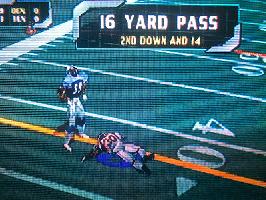
I’m just gonna say it. Most of Midway’s games from the Dreamcast era have not held up well. Obviously, there are exceptions, which I’ll get to later. However, I’m surprised to find that many of its iconic titles lack that special sauce of approachability, variability, and layered depth which defines the more enduring arcade-style experiences from that period.
In the case of NFL Blitz 2000, it certainly nails approachability but not much else. Remarkably, the game takes the inherently complex (if understandably confusing) sport of American football and distills it into its simplest and most exaggerated form. The game draws players in with its three-button scheme and simplified play calling and hooks them with its cavalcade of brutality. Late hits and body slam tackles combine for an instantly gratifying formula that’s equal parts football and professional wrestling. Blitz 2000 paints an entertaining caricature of the sport, even if the aspects of violence it celebrates aren’t really the best look these days.
It’s an exciting concept at first – and it was certainly novel for its time – but, unfortunately for Blitz 2000, the longevity of its appeal crumbles about as rapidly as an offensive line’s pass protection in this game. Once you settle into its fundamentals, Blitz quickly runs out of ways to reward continued practice and experimentation. Eventually, it becomes clear that spamming long bombs and quarterback sneaks wear down defenses far more effectively than the game’s illusion of tact. Otherwise, the bombast turns to boredom as the rest of the playbook becomes more or less irrelevant, an adjective which also sums up NFL Blitz 2000 in 2020.
15. Airforce Delta
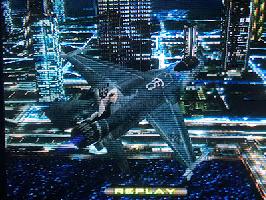
I can’t think of a more clever way to summarize this game other than to describe it as a poor man’s Ace Combat. Airforce Delta is about as generic as video game design gets. That said, I still enjoy it today, if only because 1) console flight combat games have been surprisingly few and far between for the last couple of decades and 2) blowing up shit is fun.
Similar to Namco’s long-running aerial battle franchise, Airforce Delta’s missions roughly consist of 10% flying to the objective area; 10% destroying select ground targets; and 80% banking around until I finally get lucky enough to get a good missile lock on bogies. Sure, the campaign throws in the occasional trench run and obligatory escort mission to “mix things up” but the mission structures aren’t generally interesting or memorable enough to make any mark of its own on the genre. The game even borrows from Ace Combat’s narrative playbook by depicting a wartime campaign between two stand-in nations: totally-not-Europe vs. totally-not-Russia. Ironically enough, even though its warring forces are fictitious, it still managed to license dozens of IRL aircrafts for you to pilot.
14. Ready 2 Rumble Boxing

Speaking of shallow Midway Dreamcast games…let me tell you about Ready 2 Rumble Boxing.
Replaying it today, R2R strikes me as an amusing time capsule of the Dreamcast’s “next gen” visual flair as well as every embarrassing late ‘90s character trope. Many of the game’s novel details – the dynamic facial bruising and missing teeth, varying venues and crowd sizes, exaggerated stumbling and falling animations, etc. – are still as impressive to me now as they were back in ’99. On the flip side, R2R’s Jell-O boobs and copious cultural and racial stereotypes are perhaps less endearing. And don’t even get me started on the creepy-ass virtual Michael Buffer. Have you seen this guy?

Dude's terrifying.
Unfortunately, Ready 2 Rumble also ages poorly in the same ways as other Midway games from that era. It leans into the bombast of its absurd pugilists and – at least for a few bouts – I had a pretty fun time reacclimating myself to the tactile weightiness of its jabs, hooks, and crosses. Unfortunately, the depth wore away the minute I remembered that spamming uppercuts ad nauseam racks up the “R-U-M-B-L-E” meter, which then enables your boxer’s berserker mode, at which point your opponents practically TKO themselves.
Theoretically, the career mode promises to add some depth, complete with optional QTE mini-games for building up your character’s stats. Unfortunately, the game’s shallowness is only exacerbated when your character becomes an OP motherfucker after some bag work and protein supplements. In all, Ready 2 Rumble’s boisterous characters and flashy presentation are no match for its featherweight depth.
13. Expendable

Yo, this game is good, actually.
And by “good,” I mean it’s big dumb gun fun on Dreamcast. In the broader context of the platform’s diverse launch lineup, I find Expendable a refreshing reprieve from all the non-murderous penguin racers and combat-devoid flight games littering the Dreamcast’s day one lineup. Expendable never set the Dreamcast world on fire – though large portions of its in-game world are on fire – but I’m surprised to find I enjoy it far more now than I did 20 years ago. There’s a cathartic, if mindless rhythm to moseying through its corridors, collecting bigger guns, and blasting every baddie and boss the game throws at me.

…Well, except for this guy. He was just chilling in a swimming pool while minding his own business, so I left him alone. Float on, buddy.
Tragically, Expendable lived and died as a twin stick shooter in a single stick world. The control scheme – in which you make your clone soldier dude strafe via the trigger buttons – is a product firmly of its time. There’s some charm to it but even that wears a bit thin before long. Expendable is still an enjoyable game to revisit, but mostly to scratch that itch for mindless destruction between more substantial, longer form gaming experiences.
12. Power Stone

Power Stone is one of those games that I’ve always appreciated, conceptually, but could never get into as much as most fans. That’s not to say I dislike it by any means. Revisiting Power Stone’s one-on-one melee brawls today, I appreciate the simplicity of its chaos. There’s a certain hook to jumping/darting/diving/rolling around the arena and alternating between scuffling with your opponent and scrounging for any object that can be conceivably used as a weapon against them. Perhaps comparisons with Super Smash Bros. are rote at this point but, at its best, Power Stone has a similarly intuitive flow and unpredictability as Nintendo’s tentpole brawling franchise.
Unfortunately, at certain points during each match, things become extremely predictable. As soon as all of the titular power stones have spawned into the arena, the game devolves into a mad scramble to collect all of them before your opponent does. Whoever gathers them first will go Super Saiyan, becoming both highly resistant to damage while unleashing devastating attacks on their opponent and practically assuring victory. At this point, the motivation is as much to keep your opponent from acquiring the stones as it is for you to collect them yourself. There’s a brilliance to this, conceptually, but the power stones are so jarring in their artificial and abrupt disruption of the game's flow, I’m torn on whether Power Stone actually benefits from its namesake mechanic. I don’t remember this being an issue in the sequel, which seems to balance out the collect-a-thon chaos with more hectic, four player battles and destructive set pieces.
Ultimately, the stone collecting mechanics make Power Stone more stressful than interesting or challenging but I continue to appreciate its novel approach to free-roaming arena battles and I still enjoy replaying it in brief, occasional spurts today.
11. Sonic Adventure

I owe a lot to the original Sonic Adventure. As I mentioned in a
previous Junkyard essay
, this is the game sparked my interest in the Dreamcast and introduced me to the magical naďveté/cynicism of the gaming hype cycle. Sonic Adventure was my favorite Dreamcast game at the time, if simply by virtue of the fact it was the only one I owned for the first three months. I honestly can’t think of another Dreamcast game I harbor more nostalgia for than this one.
However, that kind of nostalgia has lost its luster as it's been so fiercely coopted by consumerist propaganda and toxic fan culture. After 21 years, I’d think we can be honest enough with ourselves to admit that Sonic Adventure plays like trash and it probably always has.

Not that it really matters. I’m not interested in litigating Sonic Adventure’s myriad issues, other than to acknowledge that its failures run deep into the bedrock of its design – far beyond its general twitchiness, glitchiness, irritating characters, half-baked buffet of play mechanics, and its frequently loose definition of “floors.” Anyway, none of these shortcomings detract from my admiration of Sonic Adventure’s ambitious scope, nor my continued enjoyment of its Chao garden and the three-and-a-half decently designed Sonic action stages.
Going back to what I said about Buggy Heat’s conundrum earlier, Sonic Adventure also fails in a spectacular number of ways but there’s a key difference: it has charm. If nothing else, Sonic Team had an absurdly ambitious vision for this game that remains remarkable in its scope, even by today’s standards. It guided players through intertwining narratives for its furry protagonists, and featured an endearing hodgepodge of “six-games-in-one” gameplay concepts. Sonic Adventure was littered with odd mini-game diversions and random nooks to explore. I’ll also defend the game’s hub worlds to death – particularly for their novel and surprisingly interesting world building. Between scandalous newlywed affairs and transit operators striking for better working conditions, Station Square’s social and political climate is spicy and its NPCs will tell you all about it.

Overall, Sonic Adventure has aged about as poorly as any game could and its failures grow even more pronounced as time goes on. Still, I can’t help but respect the hell out of everything it tried to do.
Note from the future: It's safe to say
I've come back around on Sonic Adventure
since I originally wrote this.
10. AeroWings

Until recently, AeroWings fell squarely into the category of games that I respect far more than I actually enjoy playing (see also: Sonic Adventure and Power Stone). I’ve always appreciated that it demands patience of players, emphasizing nuanced stunts and formational maneuvers rather than shooty, blowy up bits. Though that’s not to say the game is completely devoid of destruction. Just ask my Blue Impulse squadmates who I crashed into at least a dozen times (sometimes on accident) while playing through it recently.

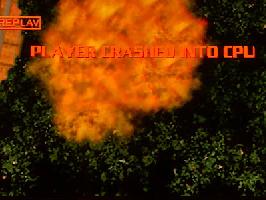
That said, I’ve greatly warmed up to AeroWings recently. I can’t give it enough credit for wrapping relatively complex flight sim concepts into such an intuitive design. Through its Blue Impulse training missions, you learn how to pull off a variety of increasingly complex maneuvers like loops, barrel rolls and corkscrews, and each are more rewarding than the next. Additionally, the Sky Mission Attack stages have you flying point-to-point to hit as many rings as possible (not unlike Pilotwings), while Free Flight mode basically lets you do whatever the hell you want.
During my most recent time with AeroWings, I’ve been enjoying the nuanced interplay between speed, pitch, and roll and how minute adjustments to each can result in nifty aerial stunts and/or complete disaster. It’s a thin line and I respect it. Overall, I’ve increasingly found AeroWings a surpringly relaxing game to chill out to and is made even chiller by its solid drum-and-bass soundtrack.
Also, while we're on the topic, definitely check out this
fantastic overview
of the AeroWings/AeroDancing franchise that Tom Charnock wrote a while back.
9. Pen Pen TriIcelon

At the risk of ensuring this post ages terribly: as I write this, one of the most popular video games right now is Fall Guys: Ultimate Knockout. Ironically, one of the least popular Dreamcast launch games was Pen Pen TriIcelon. I find this ironic because it’s a little-known fact that these two games are basically the same thing. Bumbling, waddling racing action? Same. Endless wardrobe and accessory customization? Same. Whimsical and deceptively fun multiplayer mayhem? Saaaaaame.
Okay, so there are a few differences. Whereas Fall Guys makes everyone play as the same creepy bulbous creature, TriIcelon lets players choose from several creepy penguin-hybrid creatures, including dog-penguins, shark-penguins, and even penguin-penguins. Although Pen Pen only supports up to four players compared to Fall Guys’ 60. But do the Fall Guys have a cross-promotional stamp-collecting fetch quest in an entirely different video game? I think not.

As overlooked as it was at the Dreamcast’s launch, I consider Pen Pen TriIcelon a legit multiplayer classic today. It’s simple, it’s vibrant, and it’s ripe for shenanigans. It’s definitely a game I come back to more than I ever thought I would back during the Dreamcast’s early days.
8. Tokyo Xtreme Racer

It’d be unfair to punish Tokyo Xtreme Racer just because its sequel was such a great game. But strictly speaking in context of the Dreamcast’s launch, Tokyo Xtreme Racer is a novel departure from the simulation and arcade racer dichotomy that dominated the late ‘90s landscape. In practice, it’s a nifty blend of those, plus fighting games, kinda.
Initially, TXR sets a leisurely tone as you cruise around its perpetual nighttime expressway, which is shared by scores of rival racers from a myriad of racing gangs around Tokyo. However, the second I engage a fellow rival in a one-on-one battle, those relaxing vibes go out the window. The goal then is to decimate the other racer’s “health” bar, which depletes faster the further they fall behind. Unfortunately, there’s a fair share of bullshit to deal with, including traffic, barriers, and the clunky handling (which makes avoiding the other two a chore). Winning races nets money, which allows me to purchase new realistic-but-not-technically-licensed cars and upgrade them so I can race against faster and more intense opponents. I’ve never sworn so much at a racing game than when my faux Supra was on the verge of winning against a high ranked rival from the 4 Devils gang, only to smack into a minivan and lose that race for the fourth time. I was eventually able to eke out a victory and finish the game but holy shit.

At any rate, I greatly enjoyed revisiting the original Tokyo Xtreme Racer. There’s something addicting about TXR’s structure as it oscillates between a dichotomy of relaxed cruising and intense race battles. The formula has also held up nicely, particularly as more recent progression-based racers (Forza Horizon, Need For Speed, Burnout: Paradise, etc.) have also trended in that direction.
7. CART Flag to Flag

Of all of the launch games I played through in the lead up to this feature, Flag to Flag was one of the biggest surprises. Honestly, I’ve always dismissed it as a dumb and shallow racer. And after recently playing through its 19-race season mode, I can confirm it’s exactly that.
But what Flag to Flag lacks in depth and realism, it makes up for in charm. There’s something absurdly fun about zipping through the course in first-person cockpit view while recklessly bumping into/glitching through opponents as you work your way up through the grid. Honestly, there really isn’t much to it in terms of strategy and the game has plenty of quirks. It never feels like drafting is all that effective, veering into the grass halts your car abruptly, and there seems to be some weird AI balancing issues where opponents often outpace you on straightaways but then slow down excessively on turns. As a result, the curvier tracks – such as the city street courses and winding road raceways like Laguna Seca – are far easier than the oval courses.


Considering Flag to Flag is a mixed bag on the gameplay front, the presentation is what really ties it together for me. It’s not an especially pretty game but it is fairly vibrant. Also, its soundtrack kind of rocks. Accompanying Flag to Flag’s freewheeling gameplay are the sort of wailing guitar and synth-heavy tunes you might expect to hear in other Sega arcade hits of the era. Although I wouldn’t necessarily recommend this game to everyone, it’s the closest any Dreamcast launch title came to replicating the “blue skies” vibe of Sega’s iconic racers. For that, Flag to Flag has solidified its place on the podium of my heart.
6. Sega Sports NFL 2K
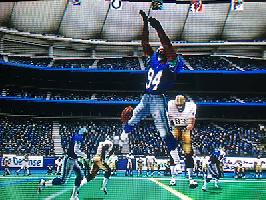
I vividly remember the hype surrounding NFL 2K in the summer leading up to launch. Even amid all of the other high-profile launch games, NFL 2K was still heralded as a tentpole Dreamcast release in North America. At the time, game magazines made a lotta brouhaha over various facets of its realism: Individual holes in the players jerseys; field conditions which deteriorate in step with the weather conditions; nuanced collision physics between players as well as the ball (which actually lands in the receiver’s hands!). These features made for some Pro Bowl-caliber hype fodder. Practically every preview marveled at how 2K’s visuals looked so realistic, they could easily be mistaken for a live television broadcast. Kind of hard to imagine that now, isn’t it?

Thanks to the Dreamcast's cutting edge technology, NFL 2K's linebackers can now swat down passes with their dick.
So here’s the thing about realism: I think somewhere there’s a law which states the more a video game strives to look realistic, the more it’ll inevitably look worse as it ages. In this vein, NFL 2K’s challenges are two-fold. First, its aesthetic design relied so heavily on the Dreamcast’s then-next gen tech being cutting edge, it inevitably drowned amid a rising tide of the nexter-gen games that did the exact same thing but with even cutting-edgier tech. Second, in hindsight, NFL 2K was a relatively shaky rookie effort for a franchise that would eventually become the undisputed champion of American footballing video games…at least until monopolistic licensing exclusivity deals (another American pastime) fucked that all up.
Although it fails to hold up visually, the NFL 2K still stands as a respectably deep and surprisingly intuitive football game. The fluidity of player movement, weightiness of blocking and tackling animations, and convincing ball physics lend this game a decidedly modern feel. In a vacuum, NFL 2K is still an immensely enjoyable game to play, even if the franchise’s future installments would improve on it in every imaginable way. Even now, I can’t help but regard Visual Concepts’ rookie gridiron effort as a Dreamcast launch showpiece.
5. Hydro Thunder

I’ve been admittedly harsh on Midway’s other Dreamcast launch offerings. And in my defense, they’re shallow as shit and nowhere near as fun as I remember them. On the other hand, Hydro Thunder still stands as one of the best racers from the late ‘90s arcade scene and with damn good reason. I remember reviews at the time praising the Dreamcast version as a largely faithful port of the arcade classic but dinged it for failing to pad itself with additional modes or courses beyond that. These days, I can’t help but think those critiques miss the point.
Today, I feel it’s easier for us to look back at arcade adaptations like this and evaluate them for the instantly gratifying experiences they were, divorced from any notions that they ought to contain some minimum threshold of extra “content” in line with modern trends. Granted, Gran Turismo had kind of warped our expectations for the typical scope of racing games at time, which made pure arcade experiences like Hydro Thunder feel comparatively limited. As more or less a straight, no bullshit port of the iconic arcade racer, Hydro Thunder is still pretty fucking fantastic on the Dreamcast. It nails the feel and flow of everything I love about both water-based and arcade racers. It’s a game that constantly rewards players for learning its complex courses, experimenting with new shortcuts, and collecting every boost powerup possible along the way. Of course, it’s a fair critique that those things become mandatory in the game’s unforgiving later courses, where even a perfect run won’t necessarily guarantee a first-place finish. Nevertheless, Hydro Thunder compelled me to race and re-race every course until I got good and/or lucky enough to unlock the next one.
Honestly, Hydro Thunder might even hold up better than I remember it. In fact, I had been stuck on the highly challenging Nile Adventure track since 1999 yet it was only a few days ago (as of this posting) that I was finally able to beat it and the rest of the subsequent bonus courses. And despite hitting my head against the wall during that time, I still enjoy replaying all of Hydro Thunder’s courses as much as ever. Nearly every track is crafted with such a brilliant blend of memorable design, complexity, and aesthetic appeal that the fact I can continue to discover new ways to tackle them 21 years later speaks volumes for their timelessness.
4. House of the Dead 2

Can’t say there were a lot of surprises with this one. I enjoy replaying the House of the Dead 2 every couple of years or so and it still holds up as one of the best light gun shooters ever made. Despite the genre’s more recent advancements in terms of VR and motion tracking tech, HotD2 has remained a genre staple thanks to its rock-solid design. The shooting is still as addicting as it ever and I’m still impressed with how accurate it still feels given its decades-old light gun technology. Sure, it does require me to recalibrate the gun with my CRT TV each time I boot up the game but that’s a small price to pay for the luxury of not needing to think about it otherwise. The best thing I can say is, whenever I accidentally shoot a helpless human NPC, I know it’s my own damn fault.
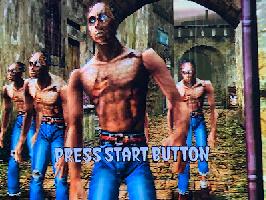
Otherwise, there’s a simple bliss to strolling (on rails) through the cobblestone streets of HotD2’s zombie-infested, Venetian-inspired city. I also love how its presentation is punctuated by the ultimate chef’s kiss of non-sequitur-laden dialogue and cheesy melodramatic delivery. Looking back, it’s funny that this game got so lost in the hubbub surrounding the higher-profile launch games, whether due to perceptions of its antiquated design or confusion over the lack of light gun compatibility with some newer TVs at the time.
Ironically, the fact that developer AM1 stuck to such tried and true fundamentals has helped House of the Dead 2 age surprisingly gracefully in the intervening years.
3. Soul Calibur
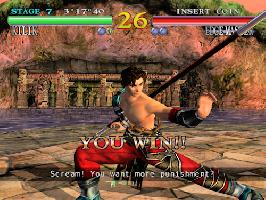
Let’s face it: the notion of striving for "objectivity" in evaluating video games has always been kind of bullshit. Nevertheless, if there was ever such a thing as the objectively greatest Dreamcast game, it’s probably Soul Calibur. I’d say that warrants at least the third spot on this list.
I can’t emphasize enough the impact Soul Calibur had on the critical discourse surrounding the Dreamcast’s launch. Leading up launch, it didn’t quite garner the same fever-pitch hype as titles like Sonic Adventure or NFL 2K. As soon as the first reviews rolled in, however, it became clear that Soul Calibur would be the critical darling of the Dreamcast’s launch and beyond. It was widely heralded as a brilliant opening salvo to gaming’s sixth generation, setting a new bar in terms of its unprecedented polish and visual brilliance. The gaming press of the time made much ado about how Soul Calibur’s incredible visuals, with their remarkable fluidity, seamless character models and animations, high quality textures and particle effects, and breathtaking backgrounds outdid the arcade version of the game in every imaginable way. The idea that Soul Calibur also played brilliantly was almost an afterthought.
Revisiting it today, I think Soul Calibur’s greatest achievement is actually its intuitiveness. Even 21 years later, it feels easy for me – as someone who sucks at most fighting games – to jump in and have effortless command over my characters’ movement and positioning, while pulling off a variety of attacks, combos, and parries to fit each situation. It still feels fantastic backing my opponent up to the edge of the arena and launching them skyward before air juggling them into the abyss. The fact Soul Calibur can still draw me in to this extent makes it easy to see why it was so widely revered, both at launch and two decades onward. I considered making a “the soul still burns” quip but I’ll spare you.
As a side bar, I know “intuitive” is a word I’ve thrown around a lot in this write up but I believe it’s a shared trait for many Dreamcast launch titles – and across the console’s library at large – and has helped shape the bedrock for the platform’s enduring appeal. When I think about the sheer innovation, charm, and creativity that has come to define the "Dreamcast spirit” (of sorts), it’s the underlying intuitiveness of these experiences that’s helped sustain peoples' continued intrigue and passion for Sega’s swan song platform.
2. TrickStyle

Years before the massive success (and subsequent fall) of its iconic Burnout series, Criterion Games cut its teeth on a number of vehicular-themed PC games, including a handful which also appeared on the Dreamcast. Released in time for the Dreamcast’s launch, TrickStyle was among them. Set in a war-ravaged future where folks from various nations vowed to settle their differences via hoverboard racing, Criterion’s inaugural Dreamcast racer was built on a promising concept and
future grim aesthetics
to back it up. Unfortunately, it was met with mixed reviews, earning criticism for its lack of unlockable content, rubber band opponent AI, and inconsistent framerate. The game immediately got lost in the shuffle amid all the other titles I’ve covered in this feature.
I also remember renting TrickStyle shortly after launch. I was not impressed.
It’s difficult to put my finger on exactly what’s changed since then but – after repeatedly playing through the North American Dreamcast version, the European Dreamcast version (which supports VGA), and the PC version over the years – TrickStyle has slowly but surely become one of my favorite racing games, possibly ever. Perhaps it simply won a war of attrition of sorts. I’ve always been a sucker for the F-Zeros, Wipeouts, and other futuristic interpretations of the genre, and to be fair, this game plays nothing like those. In fact, decades of the genre’s evolution have revealed that there just aren’t a lot of games like TrickStyle.
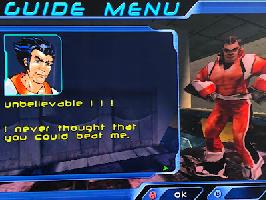
I can't think of many other games where Wolverine teaches you how to do sick tricks on a hoverboard.
These days, it’s the little things that continue to impress me most. TrickStyle doesn’t have a ton of courses but the few that are strewn across its futuristic urbanscapes – London, New York, and Tokyo – are impeccably designed with densely-packed shortcuts, alternate paths, and other atmospheric flourishes. The presentation is further buoyed by a techno/breakbeat soundtrack (including a few Kurtis Mantronik compositions). The fulcrum of the experience are the smooth and simple hoverboard physics. There’s a certain weightiness to how the boards accelerate, handle, and glide, which helps establish a brilliant sense of momentum and fluidity despite the Dreamcast version's unsteady frame rates. Beyond that are various spin, flip, and grab tricks, which feel satisfying to perform even if they aren’t particularly integral to winning races or challenges. Gotta love those luge and boogie drill moves, though. These elements combine for entrancing, even serene gameplay that feels exactly like I imagine hoverboards would in real life.
In all, TrickStyle is a perfect example of a niche racer that’s somehow more than the sum of its parts. It took the greater part of two decades to grow on me but it’s become one of my absolute favorite go to Dreamcast games.
1. Blue Stinger
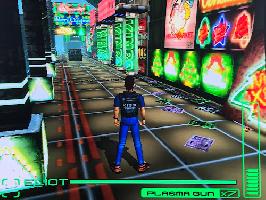
I've been rambling here for a while now so thanks for sticking with me. I'll just close this thing out by highlighting a game that could really only exist on the Sega Dreamcast. Developed by Climax Graphics, Blue Stinger is a Hollywood-influenced, copiously Christmas-themed, action/adventure brainchild of producer
Shinya Nishigaki (R.I.P.)
.
It's also a very fucking weird video game.
In this feature, I've mentioned a number of times about the importance of charm. I simply can't overstate how powerful it can be in elevating games from decently playable to outright memorable, and how devastating it can be for games devoid of it. Charm is the soul underlying so many of our favorite gaming memories, and is primarily responsible for my enduring love for the Dreamcast's most iconic (and less iconic) titles. In many cases, a game can fail across every traditional product metric that it was typically evaluated on – e.g. visuals, sound, replay, "fun factor" (whatever the hell that means), etc. – yet still endure as a personally significant and memorable experience just by virtue of its charm. For me, that is Blue Stinger's appeal in a nut shell.
Of course, the professional game reviewers of 1999 were having none of it. At the time, the game was pretty widely panned across the board for its laundry list of quirky nonsense. It was easy to interpret Blue Stinger as a ho-hum entry into a crowded survival horror genre – a jankier and less suspenseful (albeit jollier) Resident Evil wannabe – and so critics did. Indeed, Blue Stinger was not well-loved by the critical community and here are juicy excerpts from some of their reviews from the time, bad puns and all:
“
Think of Blue Stinger as a cross between Resident Evil and Metal Gear Solid…Once you get past the flashy exterior, the game’s minuses quickly accumulate, and its lack of variety and mundane play mechanics will leave you blue.
” – GamePro
“
It’s hard to believe a game that looks this good could be this disappointing but trust me – Blue Stinger is riddled with flaws. For a survival-horror game, this thing sure is dull and tedious.
” – EGM
“
Activision’s debut on Dreamcast pays adequate homage to survival-horror action/adventure games but never establishes itself as anything but a good-looking clone.
” – ODCM

This is Nephilim, the catalyst for the events of Blue Stinger.
In hindsight, I can't blame Sega (the publisher in Japan) and Activision (in the west) for leaning into these comparisons in hopes of giving Blue Stinger a short-hand association with a popular genre to help tide players over until Code Veronica's release. On top of that, each publisher had a very different idea of how Blue Stinger ought to be marketed. While Sega of Japan let Climax roll with its original vision of presenting the game in the spirit of an awkward Hollywood action blockbuster – complete with a mix of sweeping and fixed-angle cinematography – Activision insisted the North American and PAL releases be reworked with a (no less awkward) over-the-shoulder camera perspective to suit its action-heavy gameplay. However puzzled the publishers (and critics) were over what Blue Stinger was and ought to be, whatever they did, it kind of worked. Blue Stinger sold a respectable half million copies, worldwide, according to the internet.
The fun thing about hindsight is it gives us another chance to make sense of these games both within and beyond the context they were originally created. And from this vantage point, I can confidently say that Blue Stinger is not only
not
a survival horror clone (or at least not
only
one) but it's also a brilliant culmination of re-imagined genre mechanics and influences from beyond the medium. There really isn't anything else like it and I'm not sure there ever can be again.
Otherwise, Blue Stinger is my dream video game. It's set amid a massive company Christmas party gone awry (like Die Hard) which spans a dense and vibrant island town that's ripe for exploration. The setting is chock-full of bizarre and wicked monsters, both literal (murderous bio-engineered mutations) and figurative (the rampant consumerism and corporate greed enabling the situation in the first place). In battling these horrors of big pharma, Blue Stinger's answer is always more consumerist-enabled violence. You can amass a collection of weapons and ammo from generously abundant vending machines, with which you can mow down hordes of monsters, which drop coins (like Mario), which can be used to buy more weapons and ammo, which – you get the point. When it comes to the actual combat, Blue Stinger reminds me most of arcade-style beat-em-ups and I'm here for it. I can't understate the joy I get from shooting/smacking/blasting/punching deformed humanoid monsters using everything from shotguns, to fire axes, to plasma rifles, to napalm launchers, to lightsabers – and a personal favorite – the sumo t-shirt...
Is Dogs Bower’s sumo t-shirt technique the best attack move in Blue Stinger?
His fists say yes.
And his jean short squats say Hell Yes.
pic.twitter.com/Vy1zYvqm75
— Virtua-lly Brian (@VirtuaSchlub)
September 18, 2019
OK, if I don't stop soon I'm just going to keep rambling on about this game forever. To tie this all together, I'm obviously not here to insist that the charismatic mess that is Blue Stinger is ever a game I'd recommend to everyone. But it is one of my very favorite Dreamcast games, in large part because of its highly unique and potent charm. Blue Stinger also perfectly embodies so much of what made the Dreamcast resonate so strongly with me to begin with. It's a scrappy underdog that took plenty of ill-advised creative risks just to be its own earnest and bizarre thing in a world that could never quite figure out what to fully make of it.
----------------------------------
Thanks for reading! So what were/are your favorite Dreamcast launch games? Which do you still play today? Sound off in the comment section below. You can also find me on Twitter (
@VirtuaSchlub
) and on the
Saturn Junkyard's TitanCast
, where I enjoy shooting the shit with cool folks about random video game stuff.
----------------------------------
And finally, I'll leave you with a random assortment of odd Blue Stinger moments that I couldn't fit into this write up...
Also, for more Blue Stinger ramblings, feel free to check out
this post
, as well.

Blue Stinger's setting, Dinosaur Island, may have few surviving human NPCs but at least they've got their priorities in order.

The gang's all here: Eliot, Janine, and half of Dogs.

Then there was the time Eliot got gored by a mutant bull outside of a movie theater.

In Blue Stinger, Eliot Ballad can wage an actual war on Christmas.

Yes, this is a thing that happens.

"I love the smell of napalm roasting giant crab creatures in the morning." I believe that was the full quote.
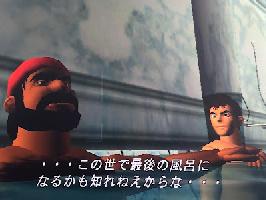
Yes, this is also a thing that happens in Blue Stinger.
I love Blue Stinger so here are some pics of Eliot scratching his head while looking at sciency things.
#Dreamcast
@TheDCJunkyard
pic.twitter.com/OSPx5auplH
— Virtua-lly Brian (@VirtuaSchlub)
September 24, 2019
That's all, folks!
